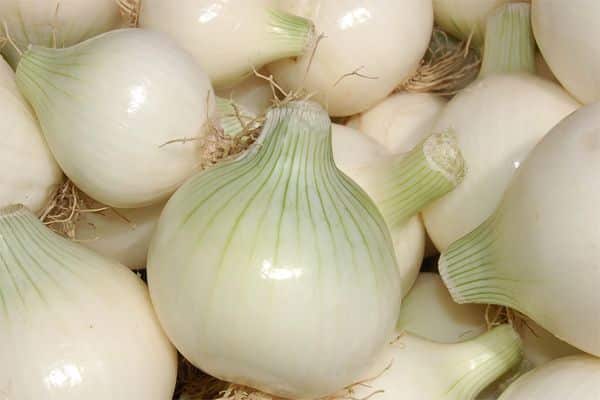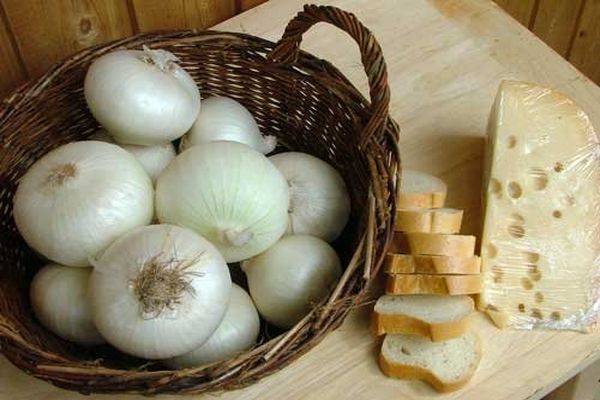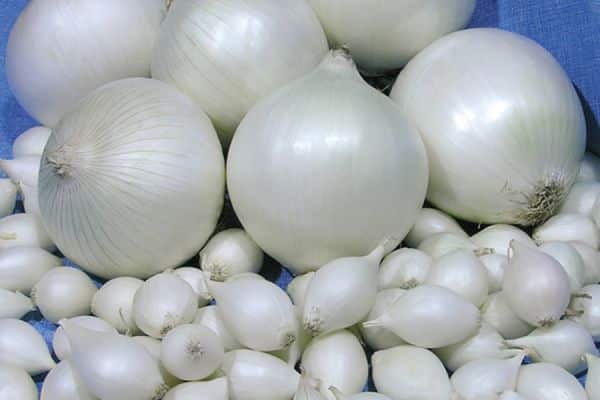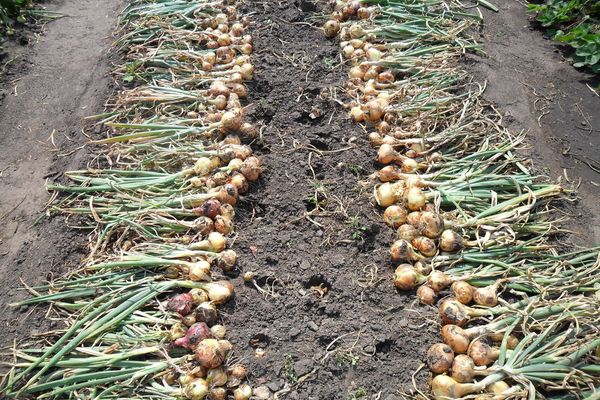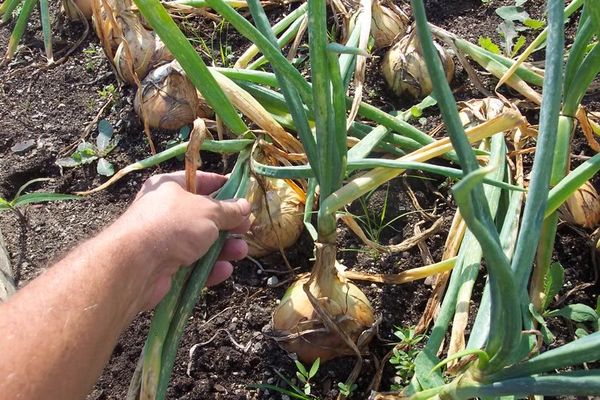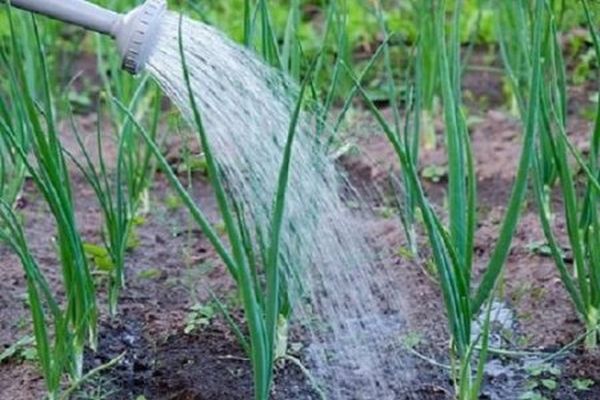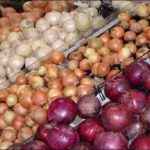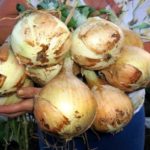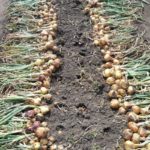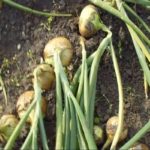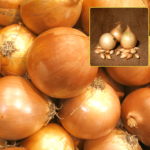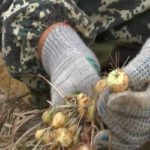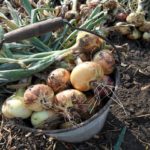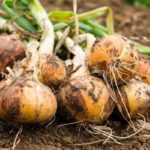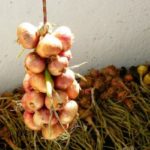Onions are an indispensable seasoning for almost every dish; white onions are also found among their types. Let's take a closer look at the benefits of white onions, which came to us from Asian countries. Like all its onion relatives, it is rich in healthy vitamins and microelements, has a sweetish taste and a pleasant aroma. Let's take a closer look at the characteristics and what is the difference between this variety and others.
Varietal varieties
Before choosing the appropriate type of onion, summer residents try to choose one that will both store well and have a pleasant taste.
White onions belong to this category and have their own varieties. Their names and characteristics are as follows:
- Comet. The bulbs are well preserved for 6 months. The downside is their ripening time and small size.
- Alba. It takes a long time to ripen, but if care is carried out according to all the requirements of agricultural technology, the bulbs can be medium or large (up to 200 grams).
- Nevada. This is an early ripening variety. It is better to plant it in regions where summer is very short. The bulbs grow medium in size, about 90 grams.
- Snowball. It has an average ripening period. The bulbs are large in size, reaching a weight of 160 grams. It is also necessary to remember: this onion variety cannot be stored for more than 3 months.
- Sterling. Disease resistant. It is stored for about 4 months. Characterized by a sweet taste. The weight of the bulbs is about 120 grams.
Distinctive qualities of white onions from others
The white variety has a beautiful shape. Unlike the usual yellow and purple, it is more difficult to store, but the bulbs are larger in size.
They differ in taste and aroma, and do not have any sharp bitterness.
It makes delicious salads and French onion soup. Popular in Spain, USA and France.
It is called white because of the color of the husk, which is somewhat reminiscent of unwritten papyrus. There are also significant differences in the content of various substances, in comparison with the yellow and purple varieties. The white vegetable contains iron salts in large quantities, as well as vitamins and microelements, essential oils, and sugar.
Valuable properties
Like all other types of white salad onions, it is considered a healthy product.It contains phytoncides, which have a detrimental effect on individual bacteria and fungi.
Onion juice has medicinal properties and is used in the treatment and prevention of colds. It can be used as an additional therapy for stomatitis and sore throat. In the autumn-spring period, as a preventive measure, it is recommended to inhale the smell of onions, previously grated or cut onto a plate.
It is necessary to include this vegetable in your diet daily as a source of ascorbic acid. Its beneficial properties are preserved both fresh and boiled.
Contraindications for use
The benefits of white onions are undeniable, but they can also be harmful. Fresh white onions are not recommended for children under one and a half years old. They have very delicate oral mucosa, so they can cause burns. When boiled, it is recommended to add it to vegetable purees and soups from the age of 1 year.
The vegetable is tolerable to all people, especially if it has undergone heat treatment. The main contraindication is fresh consumption.
Doctors do not recommend it in the following cases:
- insomnia;
- headache;
- high blood pressure;
- frequent flatulence;
- excess body weight, since the white vegetable improves appetite and stimulates the production of gastric juice.
When to remove onions from the beds?
It is very important to accurately determine the time of harvesting white onions, otherwise you will not be able to store them for a long time. If it does not ripen, its neck will be juicy and thick, and the bulb will be poorly covered with scales. Such an onion will begin to rot after a while.
If it is not removed for a long time, the scales will fly off, additional roots will grow, the bulbs will begin to crack, and a loss of beneficial properties will occur.
The main signs for harvesting white onions are:
- stopping the growth of new feathers;
- yellowness of the main part of the leaves and the beginning of drying;
- if most of the feathers are dead;
- the scales became white;
- The neck of the onion has softened slightly.
The timing of onion ripening is influenced by various factors, including:
- growing region;
- weather;
- the soil;
- features of the species.
Generally, the growing season for onions is 2–3 months. Most varieties can already be harvested in mid-July, and later varieties ripen by early August. If the summer is dry and hot, then the onions will ripen much faster. In rainy and cool weather, the readiness for harvesting of this vegetable crop slows down. The deadline for harvesting is August 20, as it has been noticed that the rains begin then.
You can adhere to the lunar calendar, which indicates the timing of harvesting. If you don’t harvest onions before the rains, they will lose their shelf life and may become susceptible to rot and other diseases.
It is best to start observing the external manifestations of crop maturation after mid-July. While the weather is dry and sunny, it is necessary to collect it in time.
How to properly harvest and store the crop?
It is best to remove ripe onions from the garden on a dry, sunny day. To work, you will need a shovel: you should not pull the bow by the feathers. It is recommended to lightly dig up the soil near the bulbs, then carefully pull them out, shaking off any remaining soil with your hands. If the neck of the vegetable is juicy, it means that it is not ripe; it is better not to store such bulbs, but to put them aside so that they can be immediately taken to the kitchen.
After the onion is dug up, it needs to be laid out directly with the feathers for drying in the same bed on the ground or cardboard.It is advisable that the warm rays of the sun fall on it. In the evening, it is recommended to put them in a dry place or cover them with film so that the bulbs do not get wet from the morning dew. Dry depending on the weather - from 7-10 days.
If the onion becomes rustling, smooth and slippery, you can easily stick your hand into it - this means that it has already dried well.
Now you need to use scissors to cut off the leaves on the bulbs, leaving about 5-6 cm of the neck.
For onion storage Best placed in a dry place at room temperature. You can place it in nets, wooden boxes, cardboard boxes, fabric bags or nylon stockings. You can not cut the leaves, but weave a braid in the form of a braid. Hang fagots in the kitchen. In this form, the vegetable is well preserved.
If you had to dig up a vegetable in rainy weather, then there is nothing left to do but process it correctly.
To do this you need:
- immediately cut off the feathers, retreating 5 cm from the neck;
- carefully remove the roots;
- clean the scales;
- Place one onion at a time in a dry place to dry for 2-3 weeks.
If the room was dry and well ventilated, then the onion can be preserved, and the husk will then grow again.
How to speed up the ripening of the crop?
Often, in order to have time to dig up onions before the rains begin, you have to stimulate the process of their ripening. There are several ways to do this, but the main thing is to limit root vegetables in your diet.
If the heads are deep in the ground and difficult to see, it is recommended to lightly sweep the soil from their surface so that they are exposed and receive sufficient sunlight.
It is necessary to stop watering 2-3 weeks before harvesting, even if the weather is dry. If it starts to rain at this time, it is better to cover the onions with plastic. You can lift the bulbs with a pitchfork.
It is recommended to insert a shovel under the bulb and cut off the roots at a depth of 5 cm.
Cutting the tops is not recommended, as the bulbs will be deprived of nutrients from the tops. When ripe they should go from green to bulbous.
Each type of onion has its own taste and aroma. For those who like a sweetish taste, white is the right choice. It is advisable to consume it daily, adding it to various dishes as a healthy source of vitamins and microelements.

